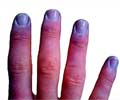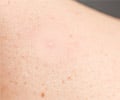Previous research has shown that the ultraviolet radiation (UVR) present in sunlight is the most common environmental carcinogen.

Skin cells called melanocytes respond to UVR by increasing the skin's pigmentation, a protective mechanism otherwise known as tanning. But the exact details of the early stages of the response to UVR are poorly understood. Now, researchers from Brown University have identified key elements of the UVR-activated pathway in skin.
The researchers identified a specific protein involved in mediating the skin's response to UVR as well as some downstream elements in the pathway. Intriguingly, their data suggest that, in melanocytes responding to UVR, the signal transduction cascade (the process by which an external stimulus leads to a response inside a cell) resembles a light-activated pathway in the eye.
More research is needed to identify other key players in this newly characterized UVR response pathway. As these remaining gaps are filled, researchers can use the information to develop better methods for protecting the human skin from the damaging effects of sun exposure.
Source-Eurekalert















